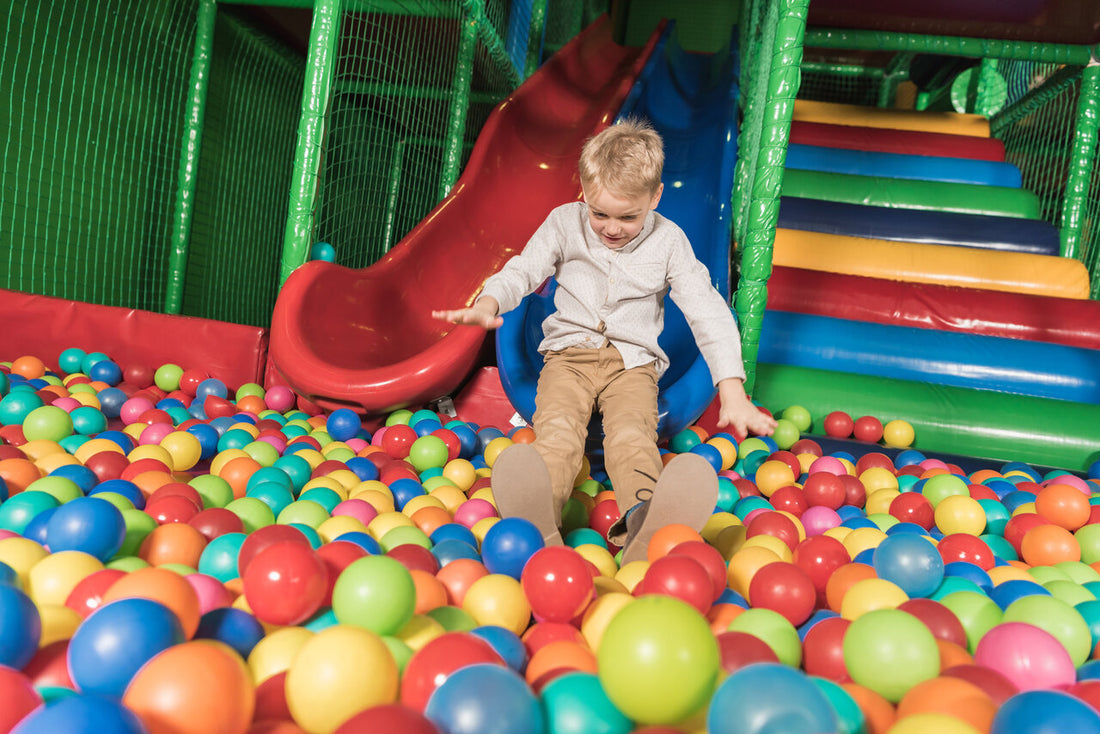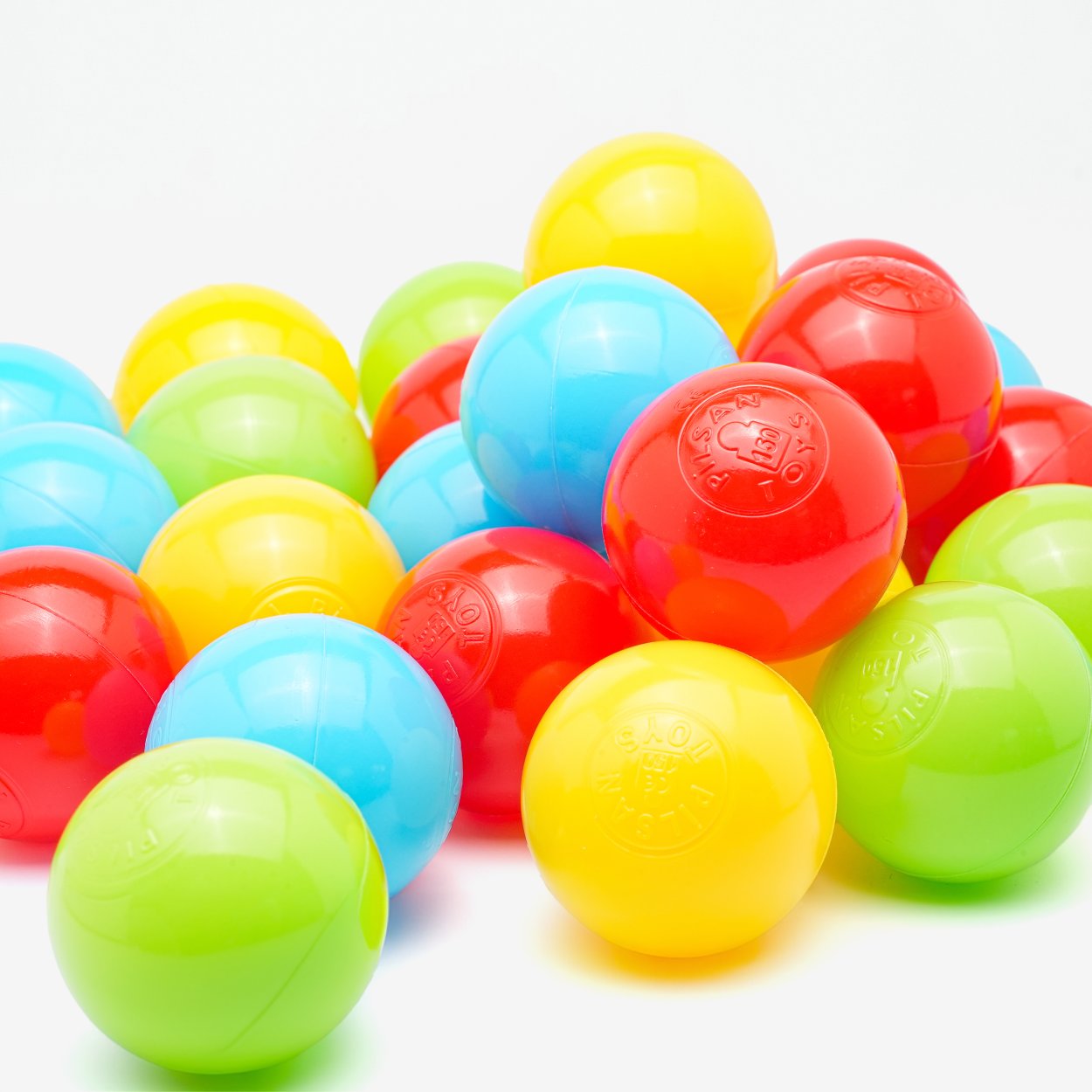
The Intriguing Science Behind Ball Pit Balls: Material, Safety, and Manufacturing
Share
Ball pit balls are the colourful core of numerous soft play areas, providing endless entertainment for children as they dive, play, and explore. But behind the bright, cheerful exterior lies a fascinating story of material science, safety precautions, and meticulous manufacturing processes. By understanding the intricacies of ball pit ball production, you can make informed decisions when choosing the perfect options for your play area, ensuring an optimal balance between fun and safety.
In this insightful guide, we'll delve deep into the world of ball pit balls, uncovering the science behind their material composition, safety aspects, and the manufacturing process that brings them to life. Learn how these vibrant play essentials are created with both enjoyment and safety in mind, catering to the unique needs of different age groups and play environments.
1. Material Composition: Understanding the Building Blocks
Ball pit balls are typically made from polyethene (PE) or low-density polyethene (LDPE), lightweight and robust plastic materials that offer excellent durability and flexibility. These materials are ideal for creating high-quality, long-lasting, and safe ball pit balls that can withstand the rigours of constant use in play areas.
- Recyclability: PE and LDPE are recyclable plastics, making them environmentally friendly options for ball pit balls. By utilising recyclable materials, play area owners can minimise their ecological footprint and contribute towards a more sustainable future for our planet.
- Child-Safe: PE and LDPE are non-toxic and free from phthalates, ensuring that the finished product poses no risk to children's health or well-being during play. This makes them the ideal choice for soft play equipment that comes into direct contact with children.
2. Safety Features: Prioritising Children's Well-being
Ensuring that ball pit balls adhere to strict safety standards is paramount to protect the children who interact with them. There are several safety features and certifications associated with ball pit balls that must be taken into consideration:
- EN 71: This European standard specifies the safety requirements for toys, including ball pit balls. It addresses potential hazards such as mechanical, chemical, and flammability attributes, ensuring that the products are safe for children.
- CE Marking: The CE marking signifies that a product, including ball pit balls, complies with relevant EU safety, health, and environmental protection requirements. It is a legal requirement for all toys and soft play equipment sold within the European Economic Area.
- Crush-Proof: High-quality ball pit balls are designed to be crush-proof, meaning they resist deformation when compressed, ensuring they maintain their structure and integrity even after hours of play. This provides a consistent and enjoyable play experience while enhancing safety by minimising the risk of choking hazards.
3. Manufacturing Process: Bringing Ball Pit Balls to Life
The manufacturing process plays a significant role in the quality, safety, and appearance of ball pit balls. Typically, they are produced through a process called blow moulding, which involves the following steps:
- Extrusion: The raw plastic material (PE or LDPE) is heated and melted into a viscous liquid. This liquid is then fed into an extruder, which forces the material through a circular opening, creating a hollow plastic tube called a parison.
- Moulding: The parison is clamped between two halves of a mould, which defines the spherical shape and size of the final ball pit ball.
- Pressure Application: Air is blown into the parison, inflating the plastic to fill the mould's cavity, hence the term "blow moulding". Once the plastic has taken on the desired shape, it is allowed to cool, solidifying into its final form.
- Ejection: The mould is opened, and the newly formed ball pit ball is removed, typically through the use of a conveyor system.
This process is efficient and cost-effective while maintaining high levels of precision and quality control, ensuring each ball pit ball meets stringent safety and quality requirements.
4. Selecting the Perfect Ball Pit Balls for Your Play Area
When it comes to choosing the ideal ball pit balls for your play area, there are several factors to consider:
- Size: Ball pit balls come in various sizes, typically ranging from 6-7cm in diameter. Choose a size that is appropriate for the age group of your play area users while providing an enjoyable and safe experience.
- Colours: Ball pit balls are available in a wide array of colours, allowing you to coordinate with your play area's theme, colour scheme, or age-specific preferences.
- Quantity: The number of ball pit balls you need will depend on the size of your ball pit area and the desired depth. Ensure you have enough balls to create an engaging and immersive experience for children while maintaining safety.
Unlock the Full Potential of Ball Pit Balls in Your Play Area
An understanding of the science behind ball pit balls, including their material composition, safety features, and intricate manufacturing process, can empower you to make well-informed decisions when selecting the perfect option for your play environment. Prioritising safety, sustainability, and enjoyment ensures that the children who visit your play area will have a memorable time while being well protected in their colourful, captivating world of ball pit balls.
At Soft Play Market, our commitment to providing high-quality, engaging, and safe ball pit balls and soft play equipment is unwavering. Explore our product range and consult with our expert team to create a play area that enriches the lives of every child who enters. Let us help you make the world of play an unforgettable and magical experience for children. Contact us today and make your play area shine.
